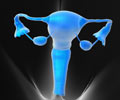Removing the ovaries during a benign hysterectomy may increase the risk of cardiovascular disease in premenopausal women and the risk of cancer in postmenopausal women.
- Removing the ovaries during a hysterectomy may increase the risk of heart disease in younger women
- Researchers also suggested that ovary removal increased the risk of cancer in older women
- Removing the ovaries may not be necessary for women at low risk of cancer
“The study results in support the current recommendations for conserving ovaries in premenopausal women without a high risk for ovarian cancer,” said Dr. Monte Swarup, an OB/GYN in Chandler, Arizona, and the founder of the HPV information site HPV HUB. “The decision to remove ovaries is based on several factors specific to the patient. If the patient is at high risk for ovarian cancer, surgery might lower the risk.”
Benefits and Drawbacks of Ovarian Removal
The ovaries and fallopian tubes are removed during a salpingo-oophorectomy. A woman can also have a salpingectomy, which removes the tubes, or an oophorectomy, which removes the ovaries. There is the option of removing just one ovary or one fallopian tube, however, these surgeries were not included in the study. An oophorectomy is sometimes used to treat:- Inflammation of the pelvis
- Ectopic pregnancy, benign tumours, and chronic pelvic pain
- Ovarian cysts of a considerable size
“Every treatment needs to be customized to the patient taking into consideration their medical diagnosis, benefits, and risks, as well as their short-term and long-term goals,” said Dr. Asima Ahmad, the chief medical officer and co-founder of Carrot Fertility as well as a reproductive endocrinologist and fertility expert.
“When discussing hysterectomy, I do not have a uniform patient recommendation,” Ahmad told Healthline. “In general, for a premenopausal woman with no known increased personal risk or family history of cancer, we may choose not to remove the ovaries at the time of the surgery. This will avoid an abrupt drop in her endogenous estrogen and medically induced early menopause.”
According to the North American Menopause Society, the average age of menopause in the United States is 51 years old. According to Breastcancer.org, there are various dangers associated with ovaries removal:
- Early menopause, which increases the risk of osteoporosis, decreased sex drive, and vaginal dryness
- Physical symptoms include joint pain, heart palpitations, muscle spasms, insomnia, urinary tract or yeast infections, and incontinence
- Emotional symptoms include anxiety, despair, and mood swings.
How Ovary Removal Impacts Cardiovascular Risk
According to a study conducted in China, women who had hysterectomies with ovary and tubal removal had a nearly 20% higher risk of cardiovascular disease and ischemic stroke than those who did not have surgery.“Removing ovaries in younger women eliminates the benefits of estrogen,” Ruiz said. “Estrogen promotes good cholesterol, HDL, and helps lower bad cholesterol, LDL. Even though we encourage younger women who undergo bilateral oophorectomy to start hormone replacement therapy, not all can (use hormones). Others stop because they don’t think they need estrogen. It would lead to increased LDL and lower HDL, increasing cardiovascular disease risk.”











